Sardara
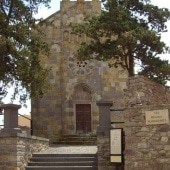
SAiNt GREGORy’s CHurch
This monument represents an interesting example of hybrid architecture including elements drawn from the Romanesque and Gothic styles. In this sense, this church has a remarkable aesthetic affinity with the church of Our Lady of Mount Carmel in Mogoro.
More...
St. Gregory’s church has a single nave with a wooden roof and a square apse, which is circular on the inside; above the apse, a Gothic bifora window.
Its transitional style is well summarized by the rich decorations: a sequence of pilasters divides the façade into three vertical units, topped by Lombard bands. These, combined with the moulded portal and the rose window, differentiate the central unit of the façade. The church is completed by a bell-gable, whilst northwards there is a secondary portal.
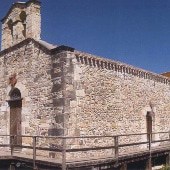
CHurch of SAiNT ANASTASIA
Located near the Nuragic well temple bearing the same name, where the Nuragic Civilisation used to worship water.
More...
Its façade is very simple and is topped by a bell-gable. The church is composed by three naves, a feature which is unusual for the churches of this area. The considerable differences that can be detected in the internal arches and in the walls suggest different construction stages. Internal and external walls show the reuse of earlier stonework.
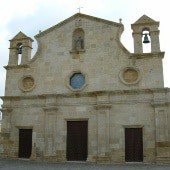
st. anthony’s church
This building dates to the second half of the 17th century and was probably the family chapel of the baronial palace facing the church.
More...
Its single nave sided by a number of chapels ends in a quadrangular presbytery topped by an octagonal pavilion, supported by pendentives. This features are very similar to Mogoro’s parish church.
The design of the main façade combines different elements drawn from the architectural examples in the surrounding area, including a double-inflection end and a tetrastyle pseudo-colonnade. However, it also presents some unique features: a triangular tympanum, a horizontal sequence of three windows, three access portals and the twin bell towers.
The church houses a polychrome wooden altar of the 18th century, carved by the artist mr. Medinas, and the 19th century tomb of the Piedmontese civil engineer officer Mareschal, who was active in the construction sites of the road connecting the two heads of Sardinia. For the part of such road nearby Sardara, the Orrù family granted their support.
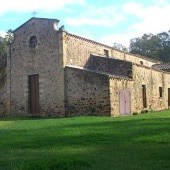
CHurch of SANTA MARIA IS ACQUAS (our lady of the waters)
This church is located near a Roman bath named Aquae Neapolitanae.
More...
Given its ancient origin and the lack of qualifying decorative features, dating is difficult to interpret. The main façade with a double-inflection end and central oculus recalls the parish church dedicated to the Assumption of Mary and the church of St. Anthony. The walls were realized with a mixed technique, including a variety of different stones.
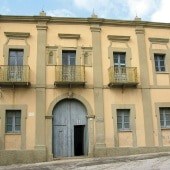
PALAZZO ORRÙ DI SAN RAIMONDO
This building probably dates to the late 17th century and was the residence of the feudal lords of Sardara. Its current appearance derives from the overall 19th century redesign, inspired by the Piedmont’s Rococo style.
More...
Following the standard feudal residences, Palazzo Orrù di San Raimondo represents the main body of a structured architectural and urban complex, including the agricultural and judicial court, the prison tower, the family chapel and the fortifications. In the early 20th century the original structure of the building was still partially legible.
Originally, the history of this building was connected to the facing church of St. Anthony, which was probably the private chapel of the Orrù family.
In 1814, the brick masters Efisio Deiana, Giovanni Marcia, Giovanni Antonio Manca and Ignazio Podda renovated the house and built the new façades, marked by a giant order of pilasters. The sober Piedmont’s aristocratic palaces inspired the Ionic windows, enclosed by frames with lateral volutes.
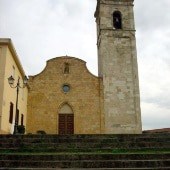
PARish church of the assumption of mary
Built at the beginning of the 17th century on a pre-existing Romanesque building, the church is located at the top of a staircase, from where it is visible from the distance.
More...
Like the nearby church of St. Anthony, the main façade of this parish church presents a double-inflection end. In the centre of the façade, the portal is topped by a Gothic lunette, to which correspond, in the upper tier, an oculus and a small niche.
On the left, the bell tower; it is similar to the 17th-century model of the bell towers of Cagliari, used in different architectures of the Campidano plain.
The 17th/18th– century wooden furnishings include some fine quality statues, decorated according to the Estofado de oro technique, the retable of the Virgin of Itria and a pipe organ.

POLO MUSEALE MASULLAS
More...
...allodiale, con la prerogativa di successione anche per linea femminile e l’esercizio in sede giurisdizionale del mero et mixto imperio, che concede il potere di amministrare la giustizia sia nel civile che nel criminale.In ogni curatoria o baronia appartenente al Marchesato vengono istituite le curie baronali e sono nominati i diversi giudici. Le cause sono spesso di natura fiscale, altre riguardano fatti criminali. L’amministrazione della giustizia feudale risulta però confusa e arbitraria: curie senza archivi ordinati, personale dotato di scarsa preparazione, corruzione e connivenza con i bandos organizzati, carceri ridotte al solo ceppo e in locali molto ristretti.
Masullas, oltre alle milizie, ospita in questi locali la curia baronale con le relative carceri.
Nel 1564, per fermare lo strapotere dei baroni nell’amministrazione della giustizia, il sovrano spagnolo Filippo II istituisce il tribunale della Reale Udienza, che giudica in appello sulle cause tra vassalli, villaggi e feudatari.
A farne parte sono letrados esperti in materie giuridiche. L’incarico più importante all’interno della magistratura è il Reggente della Reale Cancelleria, coadiuvato da altri giudici, come l’Avvocato Fiscale.
In seguito alla richiesta degli Stamenti nel Parlamento, nel 1651 viene istituita la Sala Criminale della Reale Udienza, con competenza sulle cause di natura penale.
Il ruolo che la Reale Udienza assume nel corso del periodo spagnolo non è meramente giuridico, poiché essa col tempo diventa un organo consiliare che supporta i viceré nel governo del Regno.
Info
Ex Convento dei Cappuccini
Via Cappuccini, 57
09090 MASULLAS (OR)
Sardegna
Italia
coopilchiostro@tiscali.it
Collegamenti
- Atti amministrativi
- Termini e condizioni
- Privacy Policy
- Cookie Policy
- CEAS
Newsletter
Iscriviti alla nostra newsletter per rimanere aggiornato sugli eventi del polo museale del comune di Masullas
SOSTEGNO PUBBLICO
PROGETTO NEOLITHIC PARK 3D
CUP: E78D17000220007
Bando CultureLab “Sostegno finanziario alle imprese del settore culturale e creativo per lo sviluppo di progetti culturali innovativi”


